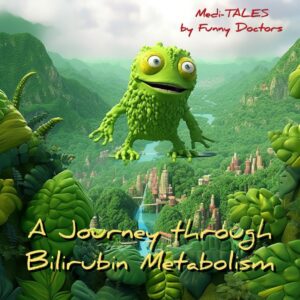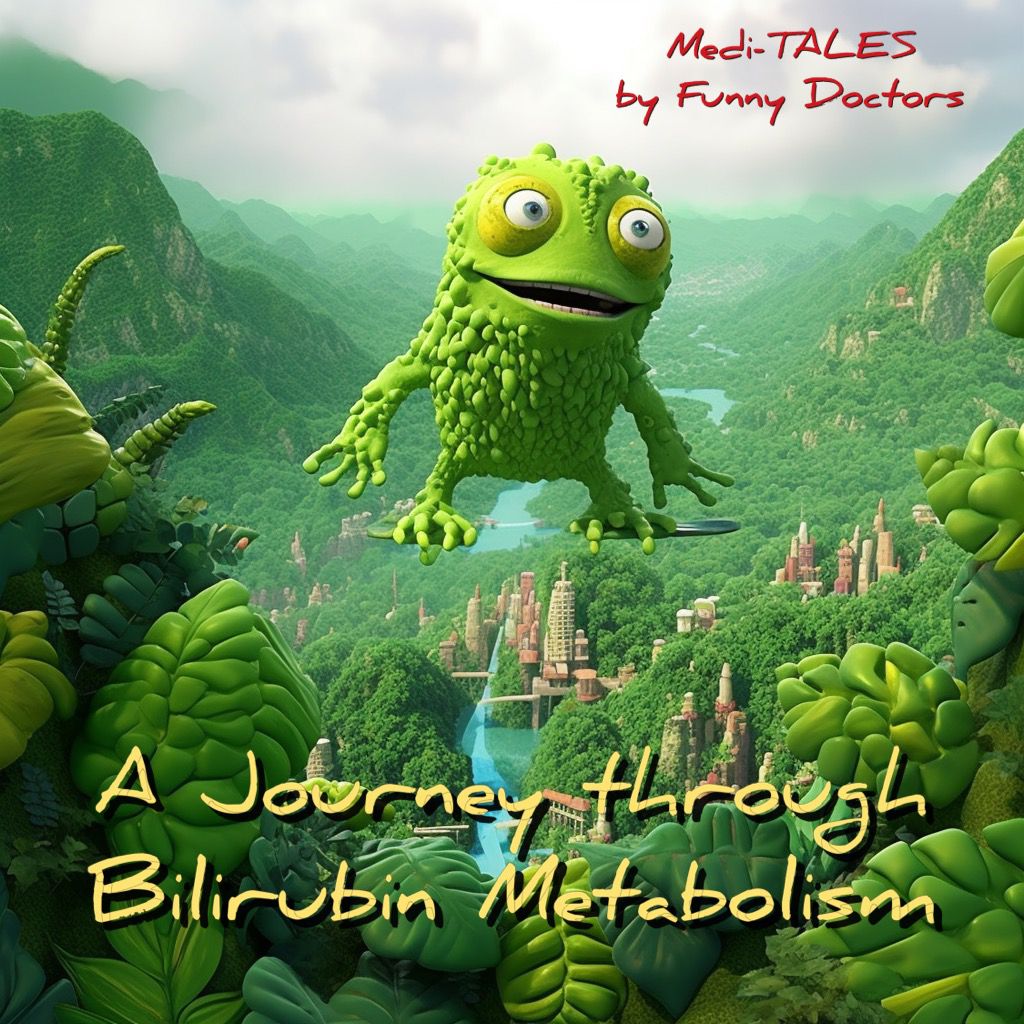Chapter 1: The Birth of Bilirubin
In the bustling city of Bodyville, a remarkable character named Bilirubin lived. Bilirubin, a tetrapyrrole pigment, had the unique purpose of bringing color and life to the world. Every day, Bilirubin was produced in the body through the breakdown of old red blood cells, as well as other sources like bone marrow and protein turnover.
Chapter 2: The Magical Transformation
The magical journey of Bilirubin began in the spleen and liver, where special cells called reticuloendothelial cells facilitated his transformation.
With the help of the enzyme heme oxygenase, Bilirubin’s formation commenced. The enzyme broke the alpha bridge of porphyrin, opening up the heme ring and initiating Bilirubin’s metamorphosis.
Biliverdin reductase, another incredible enzyme, then stepped in to reduce the methylene bridge, transforming Bilirubin into its final form.
Chapter 3: Soluble Companionship
Despite his transformation, Bilirubin faced a challenge – he was virtually insoluble in water. However, Bilirubin found a reliable companion in Albumin. Together, they formed a partnership where Bilirubin bound non-covalently to Albumin, becoming soluble and allowing for transportation in the blood.

Chapter 4: The Liver’s Realm
Bilirubin’s journey led him to the liver, where hepatocytes, specialized liver cells, welcomed him inside. Within the liver, Bilirubin underwent various processes to prepare for his next phase.
He encountered proteins, including those in the glutathione-S-transferase superfamily, which protected him from escaping back into the bloodstream. In the endoplasmic reticulum, the remarkable enzyme bilirubin uridine diphosphate-glucuronosyl transferase (UDPGT) catalyzed Bilirubin’s conjugation with glucuronic acid.
This process made Bilirubin hydrophilic, breaking internal hydrogen bonds and producing bilirubin monoglucuronide and diglucuronide.
Chapter 5: The Colorful Journey
Once Bilirubin completed his transformation within the hepatocytes, he bid farewell to his liver friends and embarked on a new adventure through the bile ducts.
Together with his glucuronide companions, Bilirubin traveled through the bile ducts until he reached the duodenum. Passing through the small intestine, Bilirubin remained unchanged until he encountered friendly bacteria in the distal ileum and colon.
With the help of β-glucuronidases, enzymes produced by the bacteria, Bilirubin was transformed back into his unconjugated form. This unconjugated Bilirubin underwent further reduction by the bacteria, giving rise to colorless tetrapyrroles called urobilinogens.
The story of Bilirubin continues in a colorful manner. Around 80-90% of the urobilinogens journeyed through the large intestine and were excreted in the feces.
Some remained unchanged, while others oxidized into orange derivatives known as urobilins, adding vibrant colors to the world. Additionally, a special group of urobilinogens, about 10-20%, embarked on an exciting enterohepatic cycling journey, returning to the liver to start their adventure anew.
This continuous cycle of Bilirubin and its transformed forms ensured a colorful and vibrant world within our bodies.
Thus, Bilirubin played a crucial role in bringing vibrant colors and participating in an intricate journey through different organs and systems. His formation, metabolism, and transformation were essential for maintaining the body’s balance
